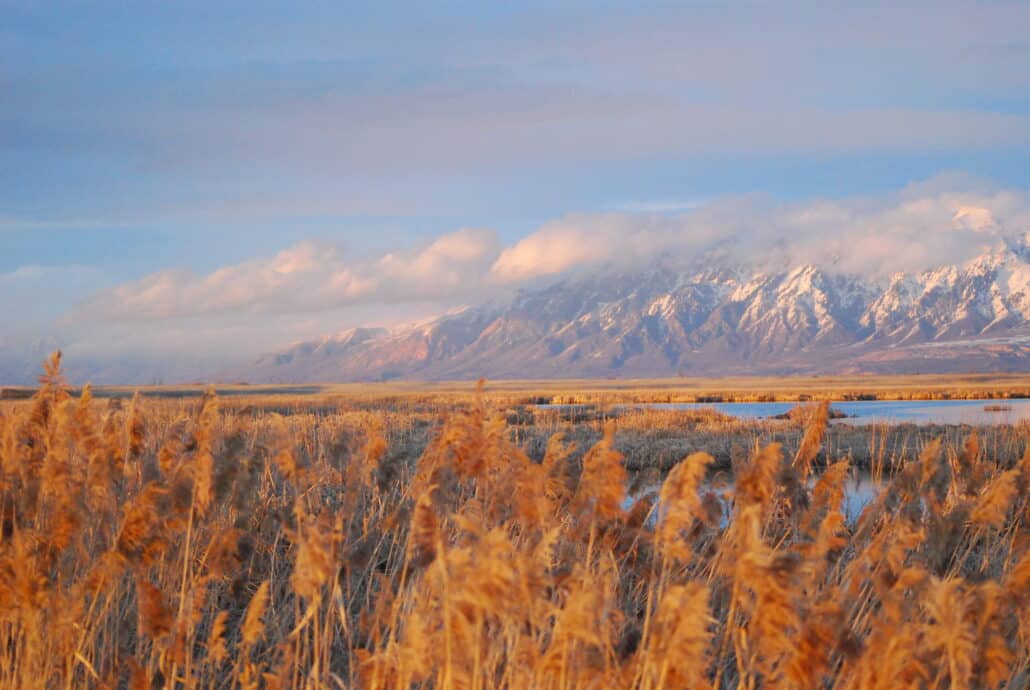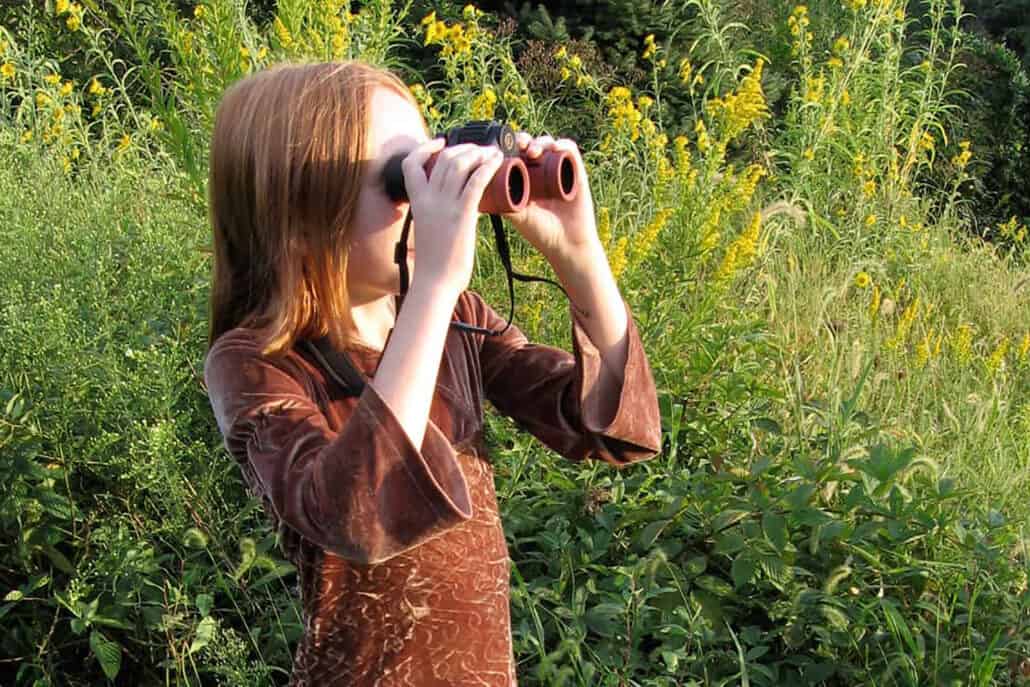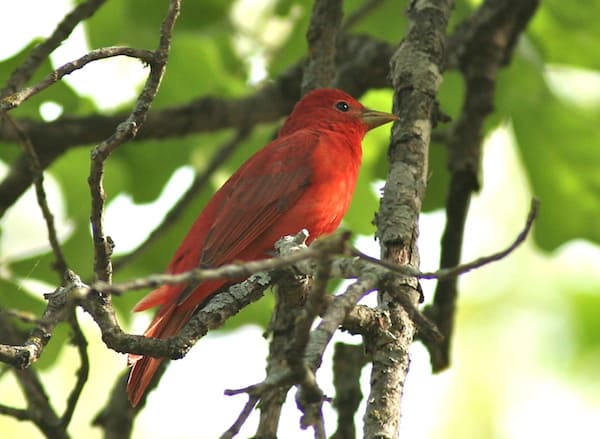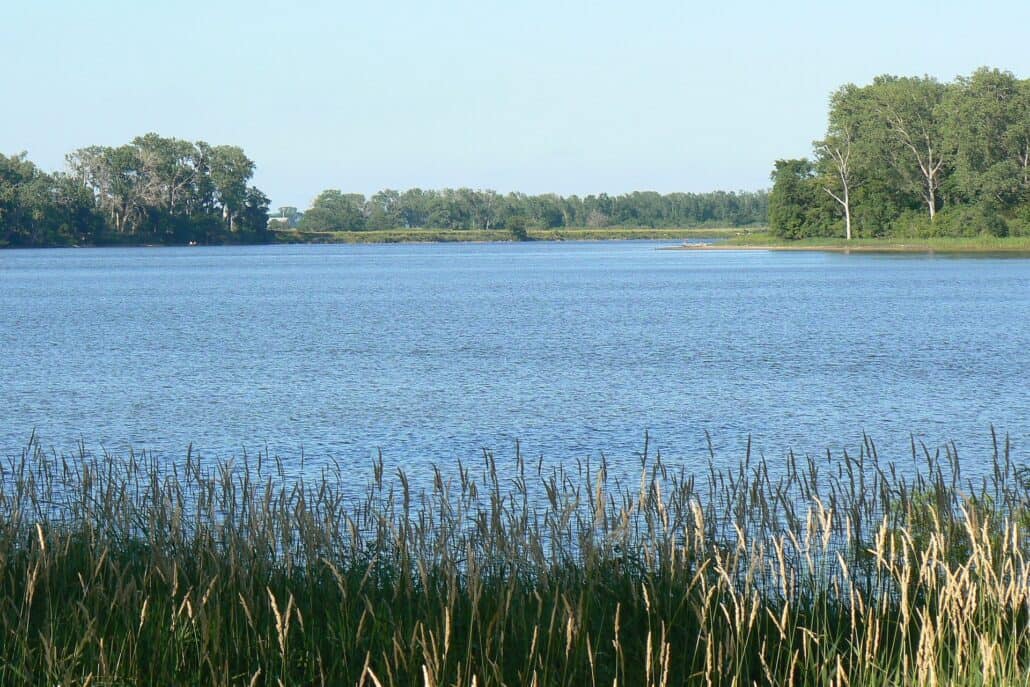Finding birds in Utah is easy. Look for water. That technique worked for my husband and me every time we tried it—beside the Great Salt Lake, in Utah’s corner of the Mohave Desert, along snow melt rivers in central Utah, and out in the western basin and range country. The birds we found in those watery places were almost always a fine mix of shorebirds and waterfowl in numbers we see on Pennsylvania’s lakes and rivers only during migration.
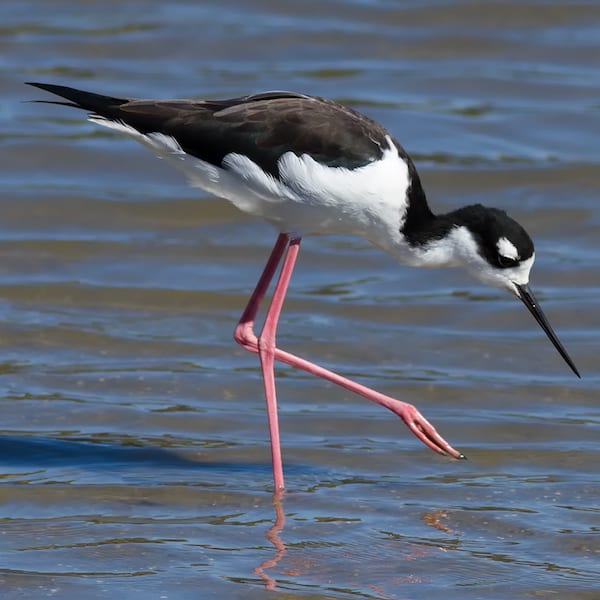
Yet, we were there in June, “a poor month to see wildlife,” according to Val Bachman, superintendent of one of the best birding areas along the Great Salt Lake—Ogden Bay Waterfowl Management Area. What, we wondered, would a rich birding time be like, as American avocets and black-necked stilts in the hundreds wheeled and screamed overhead and flocks of white pelicans and white-faced ibises soared discreetly in the distance.
To our eastern-bred eyes, the species seemed exotic, the numbers large, the setting spectacular. Mourning for the millions of birds we might have seen in March, April, and September seemed churlish at best. We would be, on this bright, sunny day in June, behavior watchers instead of listers, our usual inclination in any case, since we tend to prefer birding slowly on foot, with long periods of resting, watching, and soaking up the ambience of a particular place.
And ambience is what the Ogden Bay Waterfowl Management Area (WMA) has plenty of. Located on the delta of the Weber River where it empties into the Great Salt Lake, it is 30 miles north of Salt Lake City; the snow-capped mountains of the Wasatch Range to the east provide a dramatic backdrop for the flat delta, while the shimmering waters of the Great Salt Lake to the west are scenically strewn with rocky-peaked islands. Skeletal tree remains line the sloughs and dikes of the 20,000-acre waterfowl management area, but a living green carpet is infiltrating the silver and beige landscape wherever the meltwater from the Wasatch has been able to flush out the salt deposited by the Great Salt Lake floodwaters of the mid-1980s.
Unlike the famed Bear River Migratory Bird Refuge to the north and several other state waterfowl management areas along the lake, Ogden Bay WMA, because it is on slightly higher ground than the other refuges, was inundated for a shorter time, so the damage to it was less. As a result, recovery from flooding has been faster, enabling the area to be reopened to birders and hunters much sooner than the other refuges. The flooding even produced a positive result. Many private owners on the Weber River delta, discouraged by the flood damage, sold their land to Ogden Bay WMA at a reduced cost, so the flood increased the management area’s holdings.
Ogden Bay has been a wetland for at least 10,000 years, but when pioneers moved into the valley, they took all the water for farming. It was only in 1937 that development was begun on this Utah State Department of Fish and Game project (now the Utah Division of Wildlife Resources), with a plan to provide nesting, resting, and feeding areas for waterfowl and shorebirds as well as prime duck-hunting facilities. Three-foot-high dikes were constructed to channel the freshwater through the area, and it was those dikes that were largely destroyed by the floodwaters and are now being rebuilt. East Dike, where we walked, had been, Bachman later told us, two feet under water at the height of flooding.
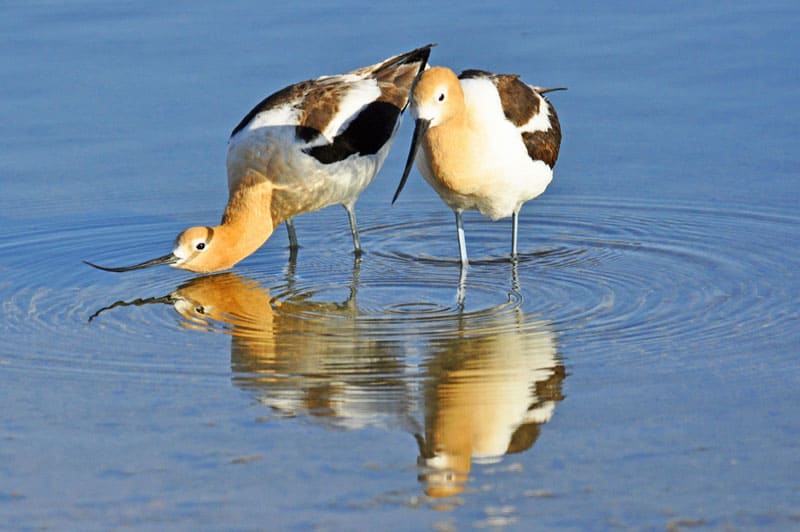
Although visitors are encouraged to walk the many miles of primitive roads, that day no one was there in that vast panorama of earth and sky except the birds and us. For hours we wandered at will, ticking off species, buffeted by 45-mph winds that kept us continually off balance, my husband trying to steady his camera and I my binoculars. Through it all our ears rang with the incessant cries of the American avocets and black-necked stilts defending their hidden nests, and possibly just-hatched chicks, against our intrusion.
We never saw either nests or chicks, but we didn’t look for them either, so pitiful did the protest screams arid diving acrobatics of the birds seem to us. Besides, I knew that the eggs, nests, and young of both species are so well camouflaged that the chances of stepping on them before seeing them were high. It was enough to be walking along the roads, admiring the flashing black and white back patterns of the flying avocets and the slick black backs and white underparts of the stilts, which fluttered their wings as they stood on their ridiculously long, thin, red legs. “Daddy longlegs,” an alternate name for black-necked stilts, seems apt for birds 13 1/2 to 15 1/2 inches in length, supported by legs a disproportionate 8 to 10 inches long. Those legs look even more ungainly streaming straight out behind their white rumps when they fly.
The American avocet, with its cinnamon-colored head and neck in breeding plumage, also trails its shorter, bluish legs behind as it flies, but its most distinctive feature is its long, slender, upcurved bill. (Its genus name is Recurvirostra, meaning “bent beak” in Latin.) The way avocets use those bills to catch food is also distinctive, and we frequently stopped to watch them as they walked slowly along the shallow edges of the marshy areas, thrusting their bills under the water with each step and sweeping them from side to side in an attempt to stir up aquatic insects from the mud.
We were not the only invaders of their territory that day. Every time a California gull, Franklin’s gull, or even a Forster’s tern flew overhead, both stilts and avocets would harry it out of the area. And the third “nervous Nellie” of the bird world— the killdeer—often added its cries to the stilt and avocet melee. In contrast, the several species of nesting waterfowl—American coots, redheads, cinnamon teal, mallards, gadwalls, northern pintails, and northern shovelers— floated serenely amid the “screamers.” Even the one enormous Canada goose—the Great Basin subspecies—we spied sitting on her nest remained regally (and silently) in place as we passed by.
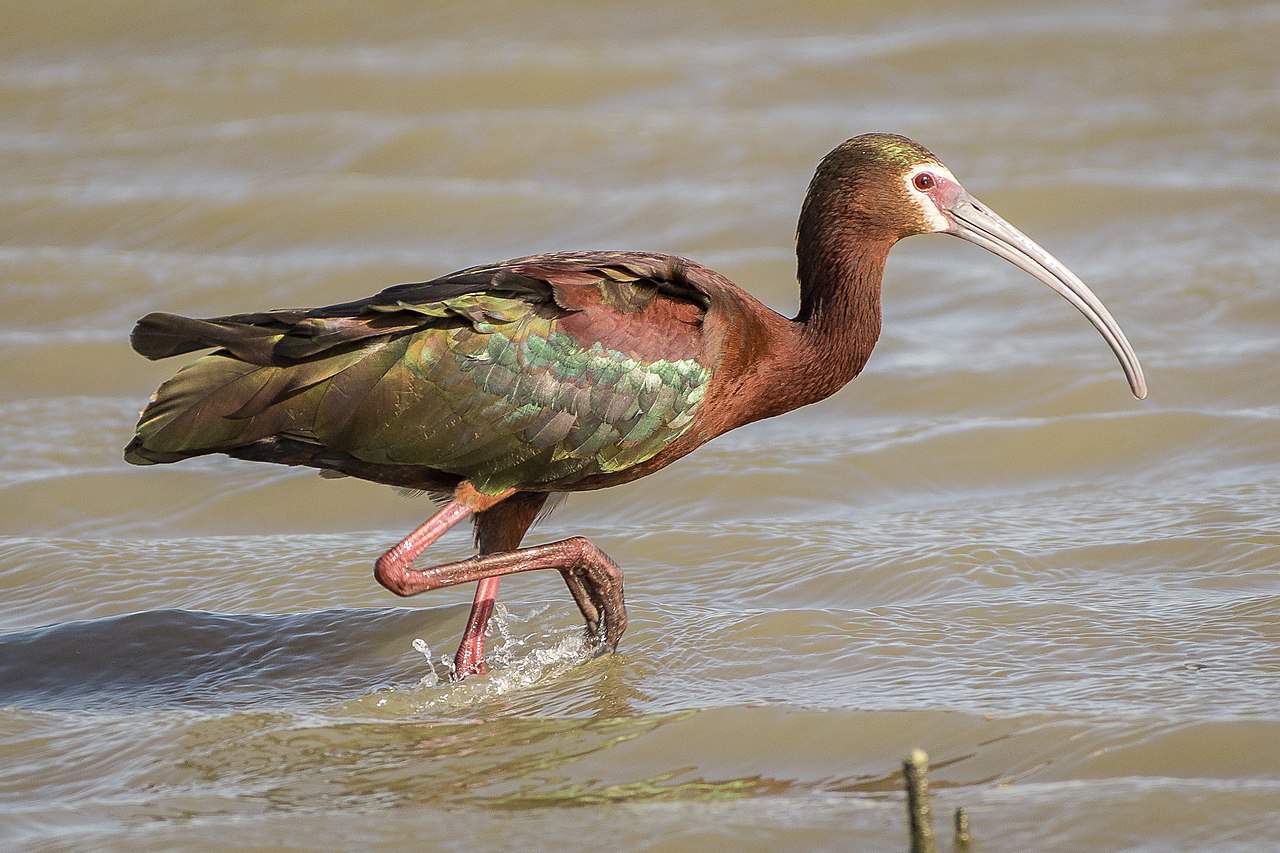
The white-faced ibises were probably also nesting, but they were quieter and managed to stay beyond safe camera range most of the time. I had once seen glossy ibises along the New Jersey shore and could understand why some ornithologists still consider the white-faced ibis to be a western United States subspecies of the glossy ibis, since the only plumage difference between the two dark, chestnut-colored birds, both with long, down-curved bills, occurs during the breeding season. Then the white-faced ibis has a narrow border of white feathers at the base of the bill extending back of the eyes and under the chin.
The glossy ibis, on the other hand, has in the same area a narrower band of facial skin that changes from blue to white, but the white does not go behind the eye. In addition, the white-faced ibis has reddish legs and lores (the space between the eye and the bill) at breeding time, while the glossy ibis retains its dark, grayish-black legs and bluish-gray lores. Each species has retained separate breeding ranges, however, except where they overlap in Louisiana, and in that area they do not interbreed.
As counterpoint to all the frantic activity, flocks of white pelicans kept aloof from the other waterfowl and shorebirds, as if they were not only separate but superior to the lesser beings plying the air above and the water beneath. We had seen our first white pelicans the day before, 80 miles south of Ogden Bay, wheeling higher and higher as we watched in late afternoon from the base of Rock Canyon outside of Provo, Utah. We lost sight of them as they whirled several thousand feet above the highest peak of the Wasatch Range.
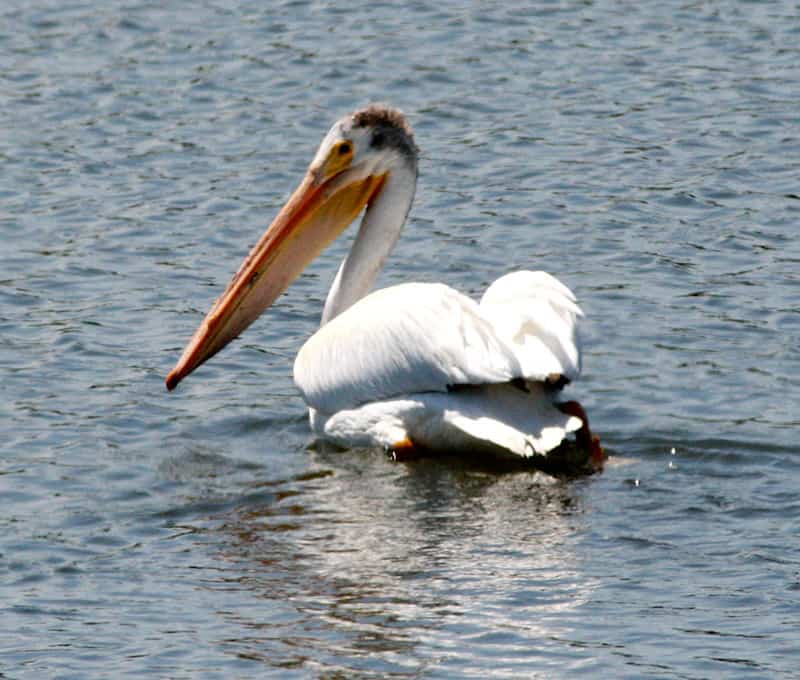
What were they doing there, we asked ourselves? At Ogden Bay WMA, Val Bachman gave us the answer. Pointing out into the haze of the Great Salt Lake, he indicated the general northwest direction of the only nesting site for white pelicans in Utah—Gunnison Island—and told us what seemed like a bizarre tale. White pelicans take 72-hour shifts at nest sitting. Those off duty head for communal fishing areas in freshwater ponds or lakes to the east and south of the Great Salt Lake, which itself has only billions of brine flies and no fish at all to offer fish-eating pelicans.
After stuffing themselves to capacity, the pelicans soar as high as they can to catch the thermals, which they glide down, on their 30- to 60-mile return flight to Gunnison. On a clear day, with a spotting scope, Bachman has watched them coming in, “almost scraping their bellies on the lake water.” Oregon naturalist William L. Finley described a similar flight somewhat more poetically, writing, “They used the sky as a big toboggan-slide and dropped like meteors, leaving a trail of thunder.”
The only other bird we listed at Ogden Bay WMA was a black-billed magpie, although I admit we were totally focused on the waterfowl and shorebirds and tended to ignore the few passerines flying up from the underbrush. We also tended to blip over those birds we commonly see in Pennsylvania—great blue herons, song sparrows, red-winged blackbirds, house finches, barn swallows.
But we were slightly abashed when Bachman handed us a recently updated area bird list containing 133 possible species. Admittedly, many of them are common and uncommon migrants. Others, though, such as eared, western, and pied-billed grebes, are common residents. And how had we missed snowy plovers, double-crested cormorants, Wilson’s phalaropes, and long-billed curlews?
It was then that we wished to return in September, when migrant ducks from both the Pacific and Central Flyways often peak at half a million, and shorebirds and waterbirds at three million. But we were merely travelers passing through, taking what the area had to offer at that time. And that was enough. Long after we left Ogden Bay behind us our ears reverberated to the remembered cries of American avocets and black-necked stilts. “We’ll hear them in our dreams,” my husband remarked. And so we did.
If You Go:
Visitor Information: With some of the most spectacular national parks in the nation—Zion, Arches, Bryce Canyon, Capitol Reef, and Canyonlands—as well as national monuments (Cedar Breaks and Natural Bridges, for instance), most visitors to Utah have more than enough to keep them busy. Yet there are numerous national wildlife refuges and state waterfowl management areas that teem with birds and are often empty of people.
Not only were we alone at Ogden Bay, but also at Clear Lake State Waterfowl Management Area in west central Utah south of Delta, where, during a half-hour stop, we identified 19 species of birds, including a close-up of a long-billed curlew and its half-grown young, western and pied-billed grebes, white pelicans, several dozen black-crowned night herons, and as many as 40 snowy egrets in one marshy area. Out in the basin and range desert we were also the only visitors to one of the remotest national wildlife refuges in the United States: Fish Springs. So, if you are tired of crowds at the parks and monuments, take a break and go bird watching at the state waterfowl management areas and national wildlife refuges.
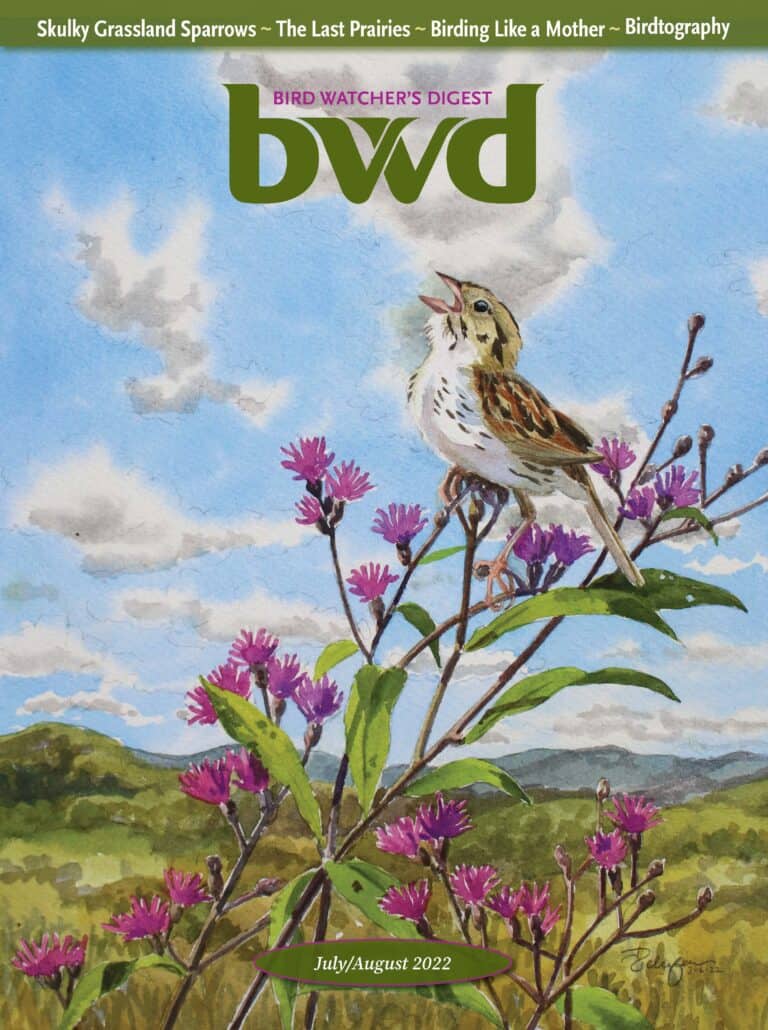
Looking to Subscribe?
Get 6 print issues of the magazine delivered to your door & free digital access
One Year Print Subscription: $26
(to US or Canada, includes digital access)
One Year Digital-only Subscription: $15

